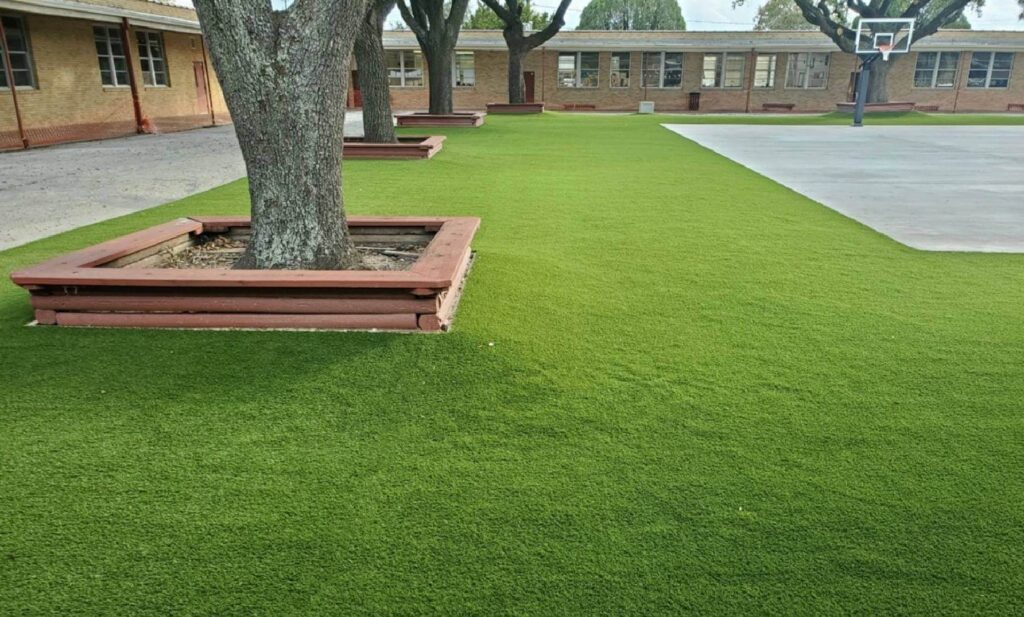Introduction: Welcome to the World of Turf Grass in Dallas!
When it comes to creating a lush, inviting outdoor space, the choice of turf grass is crucial. Turf Grass in Dallas has unique requirements due to the city’s hot summers, moderate winters, and sporadic rainfall. Homeowners and landscapers must carefully select the right type of grass to ensure a durable, low-maintenance, and aesthetically pleasing lawn.
Whether you’re a homeowner looking to improve your lawn’s appeal or a landscaping professional seeking the best options for your clients, this guide will provide you with everything you need to know about Turf Grass Dallas. From choosing the right variety to installation techniques and maintenance tips, this comprehensive post will help you achieve the lawn of your dreams.
Why Choose Turf Grass for Your Dallas Home?
Dallas homeowners face unique challenges when maintaining a lawn due to the area’s climate. Here’s why turf grass is an excellent option:
- Heat Tolerance: Turf grass varieties suitable for Dallas are specifically bred to withstand the sweltering Texas heat.
- Drought Resistance: Many types of turf grass have strong drought resistance, an important feature given the occasional water restrictions in Dallas.
- Aesthetic Appeal: A lush, green lawn enhances the beauty of your home, adding value to your property.
- Low Maintenance: Certain types of turf grass, once established, require minimal maintenance, saving time and effort for busy homeowners.
Best Turf Grass Options for Dallas
Choosing the right turf grass for your lawn depends on factors like soil type, sunlight exposure, and water availability. Below are the most popular types of turf grass in Dallas, along with their pros and cons.
1. Bermuda Grass
Bermuda grass is a top choice in Dallas due to its resilience in hot climates. It’s a warm-season grass that thrives in full sun and is known for its toughness.
- Pros: Highly drought-tolerant, durable, and recovers quickly from damage.
- Cons: Requires regular mowing and can become invasive if not managed properly.
2. Zoysia Grass
Zoysia grass is another excellent warm-season option that handles Dallas summers well. It has a dense growth pattern, which helps choke out weeds.
- Pros: Dense growth, drought-tolerant, and requires less frequent mowing.
- Cons: Slower to establish compared to Bermuda grass.
3. St. Augustine Grass
St. Augustine grass is popular in Dallas for shaded areas, as it tolerates less sunlight than Bermuda or Zoysia.
- Pros: Excellent for shady areas and provides a thick, luxurious lawn.
- Cons: Requires more water and maintenance than other varieties.
4. Buffalo Grass
For homeowners seeking a more native and eco-friendly option, buffalo grass is a great choice. It’s a native Texas species that requires very little water once established.
- Pros: Drought-tolerant, low maintenance, and environmentally friendly.
- Cons: Doesn’t have the same lush appearance as Bermuda or Zoysia grass.
Installation: How to Lay Turf Grass in Dallas
Proper installation is critical for ensuring your turf grass thrives. Whether you’re working with sod, plugs, or seeds, follow these steps for successful installation.
Step 1: Prepare the Soil
- Test the soil pH to ensure it’s within the optimal range (6.0–7.0) for your chosen turf grass variety.
- Till the soil to a depth of at least 6 inches, removing rocks and debris to create a smooth surface.
- Add compost or organic matter to improve soil fertility and drainage.
Step 2: Choose the Right Time
The best time to install turf grass in Dallas is during the warm growing seasons—late spring or early summer. This allows the grass to establish roots before the heat of summer arrives.
Step 3: Laying the Sod
- Lay the sod or plugs in a staggered pattern, ensuring that seams are tightly fitted together to prevent gaps.
- Water the lawn immediately after installation to help the roots take hold.
Step 4: Watering Schedule
New turf grass requires frequent watering for the first few weeks to ensure root establishment. Water your lawn daily, early in the morning or late in the evening to minimize evaporation.
Turf Grass Maintenance in Dallas
Maintaining your Dallas turf grass involves more than just mowing. Proper care ensures a healthy lawn that remains green and vibrant throughout the year.
1. Watering Tips
- Established turf grass in Dallas typically requires about 1 inch of water per week. Adjust watering schedules based on the season and rainfall.
- Water early in the morning to reduce evaporation and allow the grass to absorb moisture throughout the day.
2. Mowing Guidelines
- Mow regularly, but don’t cut more than one-third of the grass blade’s height at a time. For Bermuda grass, this means mowing every 5 to 7 days during the growing season.
- Keep mower blades sharp to avoid damaging the grass, which can lead to diseases.
3. Fertilization
- Turf grass in Dallas benefits from regular fertilization. Apply a high-nitrogen fertilizer during the growing season to promote lush, green growth.
- Be cautious not to over-fertilize, as this can lead to excessive growth and make your lawn more susceptible to pests and diseases.
4. Weed and Pest Control
- Keep weeds at bay by maintaining a healthy, thick lawn that can naturally outcompete invasive plants.
- Inspect your lawn regularly for pests like grubs and chinch bugs, which can damage your turf grass. If necessary, apply organic or chemical treatments to eliminate pests.
Common Turf Grass Problems in Dallas
Even with proper care, Dallas lawns can encounter problems. Here are some common issues and how to address them.
1. Brown Patches
Brown patches are often caused by fungal infections or improper watering. Ensure your lawn is getting consistent moisture, and consider applying a fungicide if needed.
2. Thatch Build-Up
Thatch is a layer of dead grass that accumulates between the soil and living grass blades. Too much thatch can prevent water and nutrients from reaching the roots. Aerate your lawn in the spring to reduce thatch buildup.
3. Compacted Soil
Heavy foot traffic can compact soil, making it difficult for grass to grow. Aeration helps loosen the soil and improves water and nutrient absorption.
Sustainable Turf Grass Practices in Dallas
Sustainability is becoming increasingly important for homeowners in Dallas. Here are some eco-friendly practices to incorporate into your lawn care routine.
1. Water Conservation
Choose drought-resistant turf grass varieties like buffalo or Zoysia grass. Implement water-efficient irrigation systems like drip irrigation or smart controllers to minimize water waste.
2. Organic Fertilizers
Opt for organic fertilizers that release nutrients slowly and improve soil health. Compost is another great option for enriching your soil without relying on synthetic chemicals.
3. Native Grass Options
Consider using native grass species that are naturally adapted to Dallas’s climate. Native grasses require less water, fertilizer, and maintenance, making them an environmentally friendly choice.
Conclusion: Achieve the Perfect Dallas Lawn with Turf Grass
A well-maintained lawn not only enhances the beauty of your home but also contributes to its overall value. Choosing the right turf grass for Dallas’s unique climate and following proper installation and maintenance practices will help you create a vibrant, healthy lawn that stands the test of time.
Whether you’re opting for the durability of Bermuda grass, the lush shade tolerance of St. Augustine, or the eco-friendliness of buffalo grass, there’s a perfect option for every Dallas homeowner.
Call to Action:
Ready to transform your outdoor space? Contact a local Dallas turf grass expert today to discuss the best options for your lawn, or visit your nearest garden center to find the perfect grass for your home. Start your journey towards a beautiful, sustainable lawn today!





